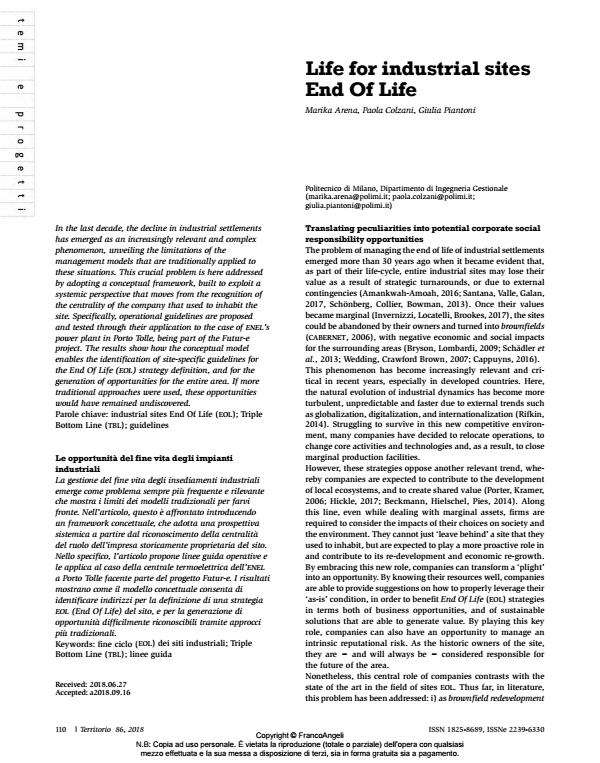Life for industrial sites End Of Life
Journal title TERRITORIO
Author/s Marika Arena, Paola Colzani, Giulia Piantoni
Publishing Year 2019 Issue 2018/86
Language English Pages 7 P. 110-116 File size 390 KB
DOI 10.3280/TR2018-086015
DOI is like a bar code for intellectual property: to have more infomation
click here
Below, you can see the article first page
If you want to buy this article in PDF format, you can do it, following the instructions to buy download credits

FrancoAngeli is member of Publishers International Linking Association, Inc (PILA), a not-for-profit association which run the CrossRef service enabling links to and from online scholarly content.
n the last decade, the decline in industrial settlements has emerged as an increasingly relevant and complex phenomenon, unveiling the limitations of the management models that are traditionally applied to these situations. This crucial problem is here addressed by adopting a conceptual framework, built to exploit a systemic perspective that moves from the recognition of the centrality of the company that used to inhabit the site. Specifically, operational guidelines are proposed and tested through their application to the case of enel’s power plant in Porto Tolle, being part of the Futur-e project. The results show how the conceptual model enables the identification of site-specific guidelines for the End Of Life (eol) strategy definition, and for the generation of opportunities for the entire area. If more traditional approaches were used, these opportunities would have remained undiscovered.
Keywords: Industrial sites End Of Life (eol); Triple Bottom Line (tbl); guidelines
Marika Arena, Paola Colzani, Giulia Piantoni, Life for industrial sites End Of Life in "TERRITORIO" 86/2018, pp 110-116, DOI: 10.3280/TR2018-086015